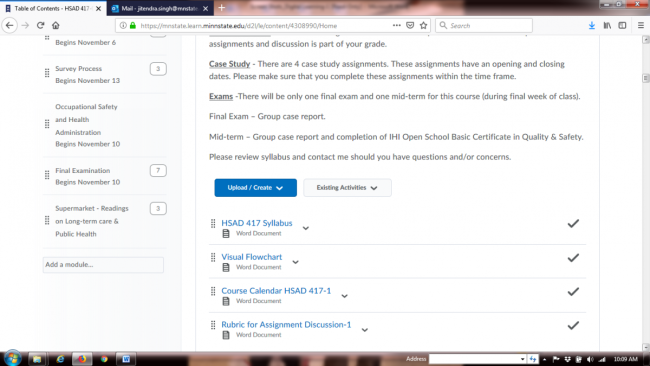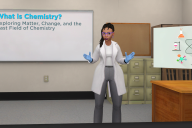You have /5 articles left.
Sign up for a free account or log in.

Courtesy of Jitendra Singh
 Trial and Error is a recurring feature from “Inside Digital Learning” that examines the successes and struggles of technology initiatives on campuses and in classrooms. Have ideas for future columns? Send them to doug.lederman@insidehighered.com. And be sure to comment below the story with thoughts and ideas for this institution.
Trial and Error is a recurring feature from “Inside Digital Learning” that examines the successes and struggles of technology initiatives on campuses and in classrooms. Have ideas for future columns? Send them to doug.lederman@insidehighered.com. And be sure to comment below the story with thoughts and ideas for this institution.
The Institution: Minnesota State University Moorhead
The Problem: Jitendra Singh, a trained clinician who now serves as program coordinator and associate professor in the School of Nursing & Healthcare Leadership, spent years working in a hospital’s quality improvement program before he shifted into academe. He’s been teaching online since 2012. It wasn’t long before he noticed that several frustrating circumstances in the health-care industry -- long wait times, confusing instructions, a lack of standardization and predictability -- also seemed to be plaguing the online format.
The Goal: The same skills for improving systems that had served Singh well in health care now seemed applicable to education. He set out to interview more than 40 online students at his institution about their experiences with the format and preferences for improvement. This process took close to three years.
“I wanted to understand the system first before I used my health-care background to change the approach,” Singh said.
The Experiment: Students reported to Singh that they often struggled to communicate with instructors who only made themselves available during business hours, and that the wide variation in design and layout from course to course was cumbersome to navigate. They also said they found that some online courses emphasized lengthy essay-writing projects and lacked real-world applications.
Singh also asked students to point to a handful of assignments in his courses that could be removed or considered extraneous.
The Successes: To incorporate all this feedback, Singh turned to the Principles of Lean, a set of practices used to help refine car manufacturing and other processes. His ultimate goal was to identify parts of the learning experience that were most valuable to students, maximize that value and minimize the rest.
More Details
Singh's approach is highly systematized and involves a great deal of detail. Here's his breakdown of the difference between regular courses and those offered by Lean principles.
Another key Lean principle is listening to demand. Singh now gives students options for assignments and tracks within his courses based on their interests. The online format lends itself to this customizable approach, he said.
“I created a supermarket of information. Students can go and choose what they want,” Singh said. “You go into this particular module based on your interest, select the readings, then get into an assignment.”
He also de-emphasized short-answer quizzes in favor of incremental exams that can be graded automatically in the institution’s learning management system. That left him more time as an instructor to focus on providing substantive support to students.
More than 90 percent of students have told Singh in student evaluations that they’re “very satisfied” with his approach, which continues to evolve. Other instructors in his department have begun implementing it as well.
The Challenges: To follow through on the Lean principles, Singh has to constantly get feedback from students and use that to make ongoing improvements. Early on, he struggled to get students into the mind-set of offering regular feedback and help them understand that changes midway through the course, while jarring at first, would ultimately be helpful.
“Students were used to giving the feedback toward the end of the semester,” Singh said. “When I was seeking feedback two or three times a semester, it did not make sense to them.”
What’s Next: Singh has pushed for principles of continual improvement and standardization to be among discussion topics in the process of hiring new instructors with primarily industry experience.







